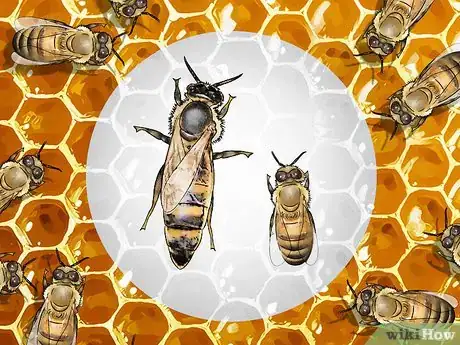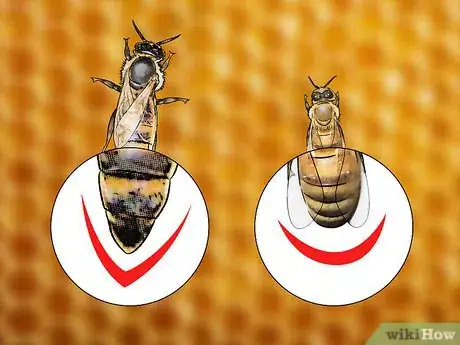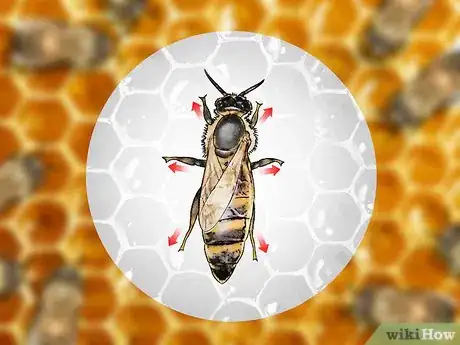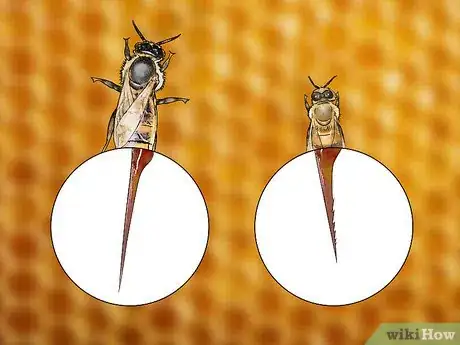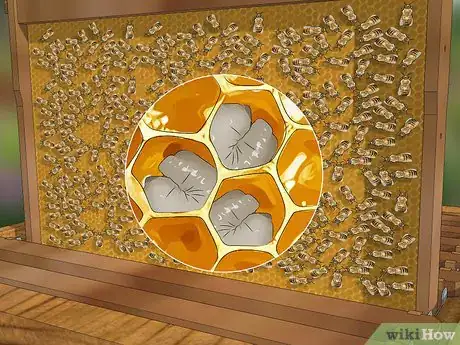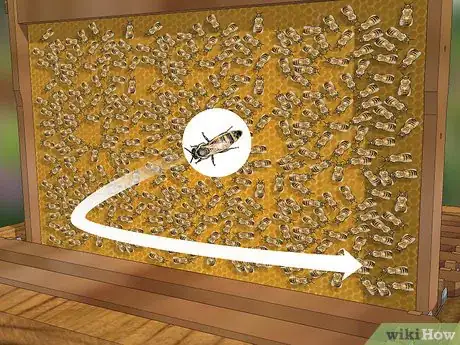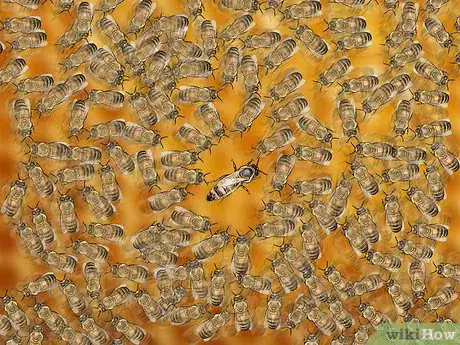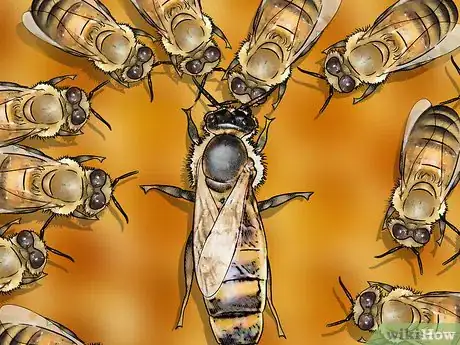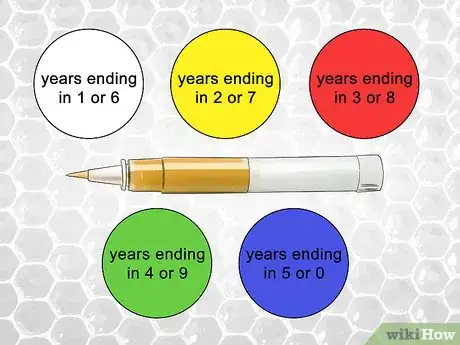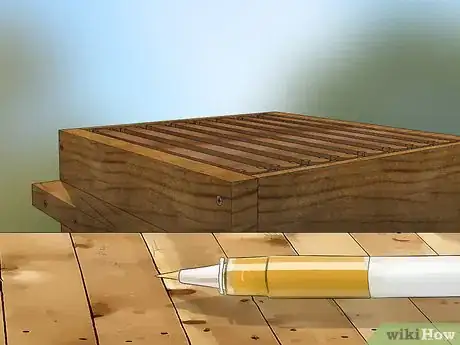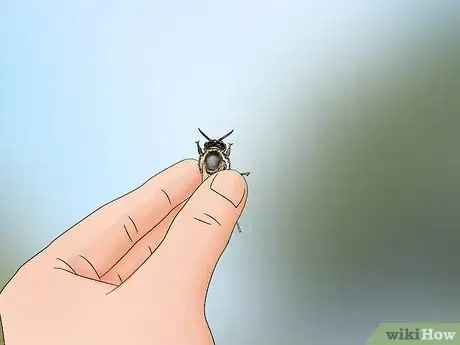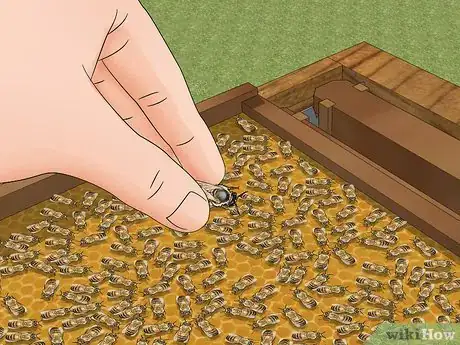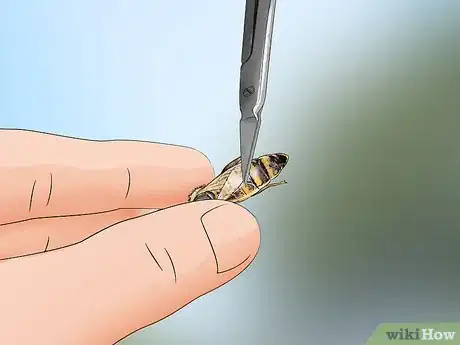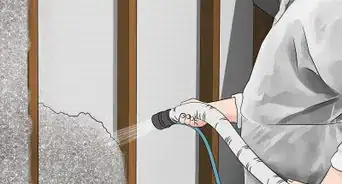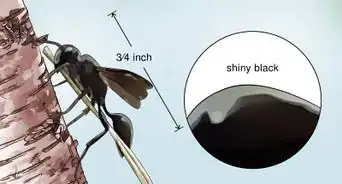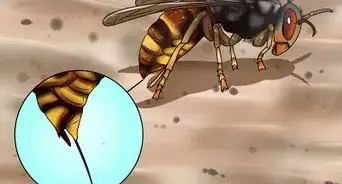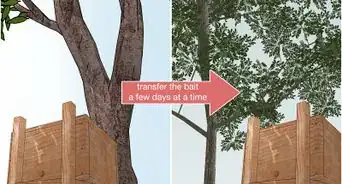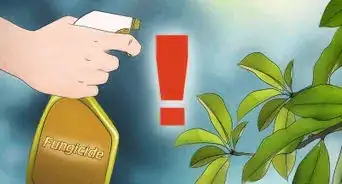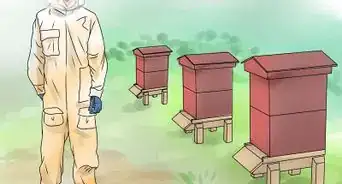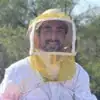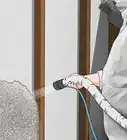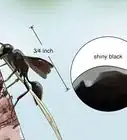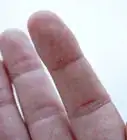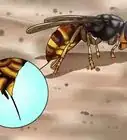This article was co-authored by Steve Downs. Steve Downs is a Live Honey Bee Removal Specialist, Honey bee Preservationist, and the Owner of Beecasso Live Bee Removal Inc, a licensed bee removal and relocation business based in the Los Angeles, California metro area. Steve has over 20 years of humane bee capturing and bee removal experience for both commercial and residential locations. Working with beekeepers, agriculturalists, and bee hobbyists, Steve sets up bee hives throughout the Los Angeles area and promotes the survival of bees. He has a passion for honeybee preservation and has created his own Beecasso sanctuary where rescued bee hives are relocated and preserved.
wikiHow marks an article as reader-approved once it receives enough positive feedback. This article received 17 testimonials and 95% of readers who voted found it helpful, earning it our reader-approved status.
This article has been viewed 495,980 times.
A queen bee is the leader of a bee colony and the mother of most -- if not all -- of its worker and drone bees. A healthy queen is necessary to the health of the hive; when she gets old or dies, the hive will die too if it can’t get a new queen in time. To maintain their hives, beekeepers must know how to distinguish a queen bee from the others and mark it once it is identified. Learn how to identify and mark your queen by looking for differences in behavior, location, and physical characteristics.
Steps
Identifying by Sight
-
1Look for the largest bee. The queen bee will almost always be the largest bee in the colony. Sometimes drones can be as big or even bigger than the queen, but you can tell them apart by thickness. The queen bee will be longer and narrower than any of the other bees.[1]
-
2Check for a pointed abdomen. A bee’s abdomen is the lower part of its body, near the stinger. Honeybees have blunt abdomens, but the queen’s abdomen will have a more pointed shape. You can easily tell the queen apart this way.[2]Advertisement
-
3Look for a bee standing with splayed legs. Worker and drone bees have legs that are directly under their bodies--you won’t be able to see much of their legs if you’re looking at them from the top. The queen bee has legs that splay outward, making them much more visible.[3]
-
4Look for a stinger without barbs. There is only one queen bee per hive. If you find more than one bee that might be the queen, gently lift each bee up by its thorax (the middle of its body). Hold them under a magnifying glass and inspect its stinger. Workers, drones, and virgin queens will have barbs on their stingers. The queen bee’s stinger is smooth and un-barbed.[4]
Looking in the Right Places
-
1Locate the larvae. Gently remove each hive frame and look for larvae. They look like small white grubs, and you’ll usually see them in piles next to each other. Since the queen lays all the eggs in the colony, she’ll most likely be nearby.
- Be very careful lifting and replacing the hive frames. You could inadvertently kill the queen.
-
2Check for hidden places. The queen bee will not be hanging out on the edge of the hive or outside. She’ll most likely be deep inside the hive, away from outside disturbances. If you have a vertical hive box, she’ll probably be on one of the bottom frames. If your hive is horizontal, look for her towards the center.
-
3Look for unusual activity in the hive. The queen may move around within her hive. If you notice any unusual activity inside the hive, such as bees clustering together or larvae where you don’t usually see them, the queen may be nearby.[5]
-
4Start in the uppermost box (hive body) and work your way down. It is common for the queen to jump off a frame as you're pulling it out of the hive and go onto the frame below. When you're done looking in a box, place it on the ground and inspect the box below.
Identifying by Behavior
-
1Watch for bees moving out of the way. Workers and drones will always move out of the way when the queen is on the move. After she passes, they’ll cluster together where she was. Keep an eye out for bees moving out of the way.[6]
-
2Look for a bee that isn’t doing anything. The queen bee is fed by the rest of the hive and has no duties except for laying eggs. Keep an eye out for a bee that doesn’t seem to have a job. It’s probably the queen.
-
3Check if the bees are feeding a particular bee. The queen will have all her needs attended to by the rest of the hive. Look for bees showing attention and providing food for another bee. This may not be the queen--it could be a virgin queen or a young bee--but the odds are good that it’s her.[7]
Marking Your Queen
-
1Choose the correct paint color. Beekeepers have designated colors to identify queens born in specific years. This helps you pick out the queen quickly, and to figure out if your hive will need a new queen soon. Be sure to choose the right paint color before marking your queen.[8]
- Any acrylic-based paint is fine. Many beekeepers use model paint or even paint pens.
- White paint is used for queens marked in years ending in 1 or 6.
- If the year ends in 2 or 7, use yellow.
- Use red for years ending in 3 or 8.
- Green paint is used for years ending in 4 or 9.
- Use blue for years ending in 5 or 0.
-
2Prepare your paint supplies. Bees can get agitated or even injured if you hold them too long, so be sure your paint is ready for marking before you pick up the queen. Keep the paintbrush or paint pen dipped and ready to go in your other hand or on a small table next to the hive.[9]
-
3Pick her up gently by the wings or thorax. Gently pick up the queen by her wings or thorax. Be very, very careful when you pick her up--if she struggles, you can accidentally tear her wings or crush her.[10]
- Some apiaries sell marking kits that let you confine the queen to a small plastic box during marking, but this isn’t a requirement.
-
4Hold her over the hive. If you accidentally drop the queen, you’ll want her to fall back into the hive instead of in the grass or on your beekeeping suit. Keep the queen held over the hive the entire time you’re working with her.[11]
-
5Put a small dot of paint on her thorax. Dab a small dot of paint on her thorax, immediately between her two front legs. Put on enough paint to make your mark visible, but don’t use too much--you could gum up her wings or legs with dried paint.[12]
-
6Clip the tips of her wings (optional). Some beekeepers prefer to clip the queen’s wings instead of marking her with paint, but this is optional. If you choose to do this, pick her up gently and trim the bottom quarter of both wings with a small set of beekeeping clippers.[13]
Expert Q&A
Did you know you can get expert answers for this article?
Unlock expert answers by supporting wikiHow
-
QuestionWhat is the difference between a queen bee and a normal bee?
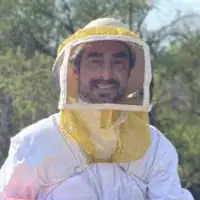 Steve DownsSteve Downs is a Live Honey Bee Removal Specialist, Honey bee Preservationist, and the Owner of Beecasso Live Bee Removal Inc, a licensed bee removal and relocation business based in the Los Angeles, California metro area. Steve has over 20 years of humane bee capturing and bee removal experience for both commercial and residential locations. Working with beekeepers, agriculturalists, and bee hobbyists, Steve sets up bee hives throughout the Los Angeles area and promotes the survival of bees. He has a passion for honeybee preservation and has created his own Beecasso sanctuary where rescued bee hives are relocated and preserved.
Steve DownsSteve Downs is a Live Honey Bee Removal Specialist, Honey bee Preservationist, and the Owner of Beecasso Live Bee Removal Inc, a licensed bee removal and relocation business based in the Los Angeles, California metro area. Steve has over 20 years of humane bee capturing and bee removal experience for both commercial and residential locations. Working with beekeepers, agriculturalists, and bee hobbyists, Steve sets up bee hives throughout the Los Angeles area and promotes the survival of bees. He has a passion for honeybee preservation and has created his own Beecasso sanctuary where rescued bee hives are relocated and preserved.
Live Bee Removal Specialist
-
QuestionHow does it know there friend of there own colony
 Community AnswerBees from the same colony emit the same pheromone, so they can tell by scent.
Community AnswerBees from the same colony emit the same pheromone, so they can tell by scent. -
QuestionWhy are there honey bees in my bird feeder?
 Carolyn ChadwickCommunity AnswerI am not sure what your bird feeder looks like or what bird food it dispenses. Bees as well as nectar feeding birds will be attracted to a nectar feeder ( usually a suspended bottle with some kind of drinking trough attached to open end). As the nectar content drops, it is replaced by air. This is not a problem for a bird size creature. A bee is small enough to get caught into the air currents pulling it in through the bottle opening. Placing a netting like material between the trough and the rest of the bottle will prevent bees being pulled into the remaining solution in the bottle. The netting is provided by some nectar feeder manufacturers, otherwise a piece of stocking will do.
Carolyn ChadwickCommunity AnswerI am not sure what your bird feeder looks like or what bird food it dispenses. Bees as well as nectar feeding birds will be attracted to a nectar feeder ( usually a suspended bottle with some kind of drinking trough attached to open end). As the nectar content drops, it is replaced by air. This is not a problem for a bird size creature. A bee is small enough to get caught into the air currents pulling it in through the bottle opening. Placing a netting like material between the trough and the rest of the bottle will prevent bees being pulled into the remaining solution in the bottle. The netting is provided by some nectar feeder manufacturers, otherwise a piece of stocking will do.
Warnings
- Always wear protective gear when working with bees.⧼thumbs_response⧽
- If you mark your queen by clipping her wings, be sure to only clip the ends. If you clip too closely, the workers might think she is injured and kill her.⧼thumbs_response⧽
References
- ↑ https://beeinformed.org/2012/04/02/queen-bee-identification/
- ↑ https://beeinformed.org/2012/04/02/queen-bee-identification/
- ↑ https://beeinformed.org/2012/04/02/queen-bee-identification/
- ↑ https://beeinformed.org/2012/04/02/queen-bee-identification/
- ↑ http://www.motherearthnews.com/homesteading-and-livestock/how-to-find-your-honeybee-queen-zbcz1407
- ↑ http://www.motherearthnews.com/homesteading-and-livestock/how-to-find-your-honeybee-queen-zbcz1407
- ↑ http://www.motherearthnews.com/homesteading-and-livestock/how-to-find-your-honeybee-queen-zbcz1407
- ↑ http://www.motherearthnews.com/homesteading-and-livestock/how-to-find-your-honeybee-queen-zbcz1407
- ↑ http://www.honeybeesonline.com/marking-a-queen/
About This Article
To identify a queen bee, look for the largest bee in the colony as the queen will be longer and narrower than the other bees. Also, note that the queen’s abdomen has a pointed shape while the other bees have a blunt abdomen. Additionally, while the other bees stand with their legs under them, the queen stands with splayed, visible legs. Location can also help you identify the queen bee. She’ll typically be near the larvae since she lays all the eggs for the colony. To learn how to mark your queen, keep reading!
